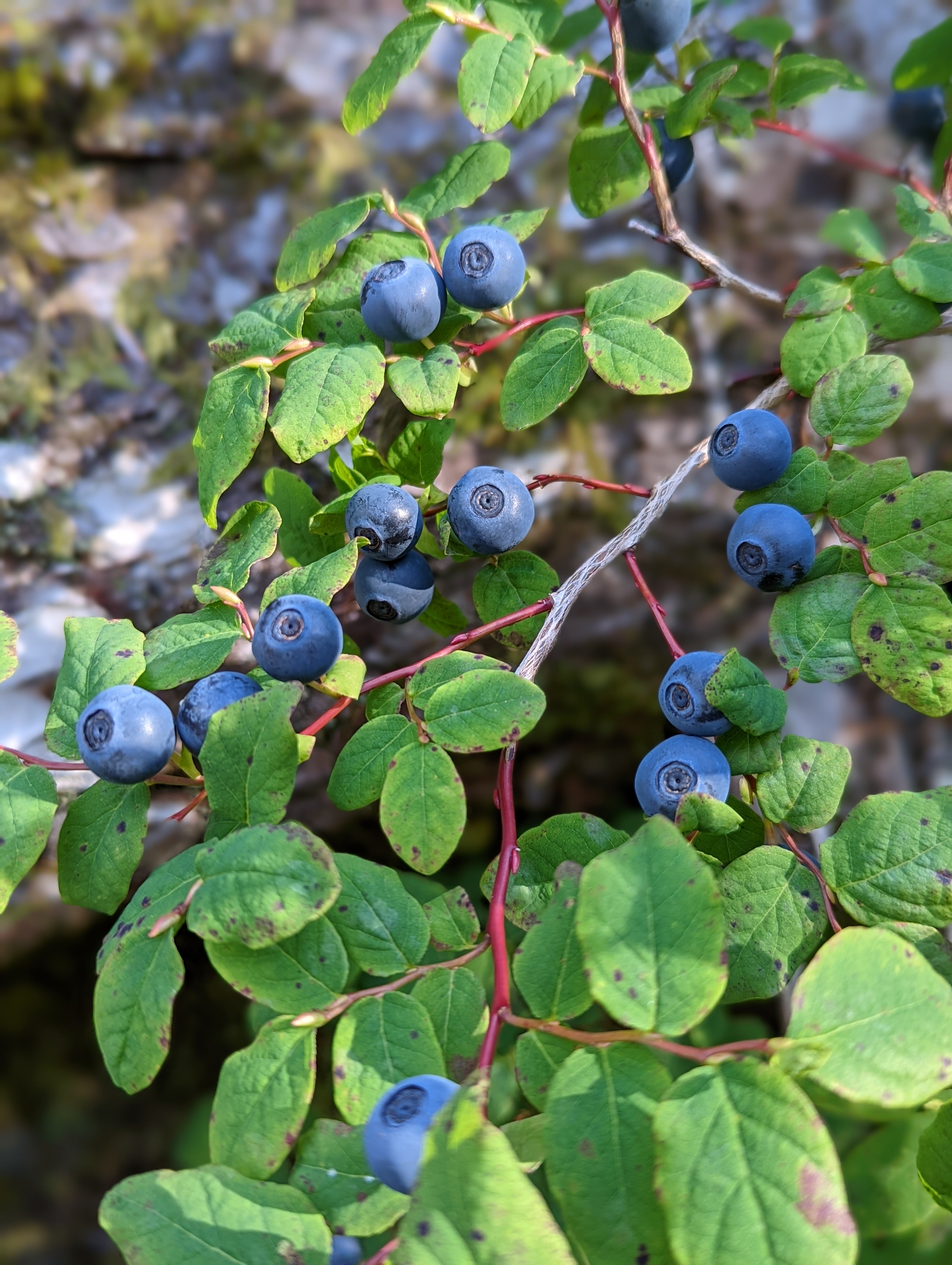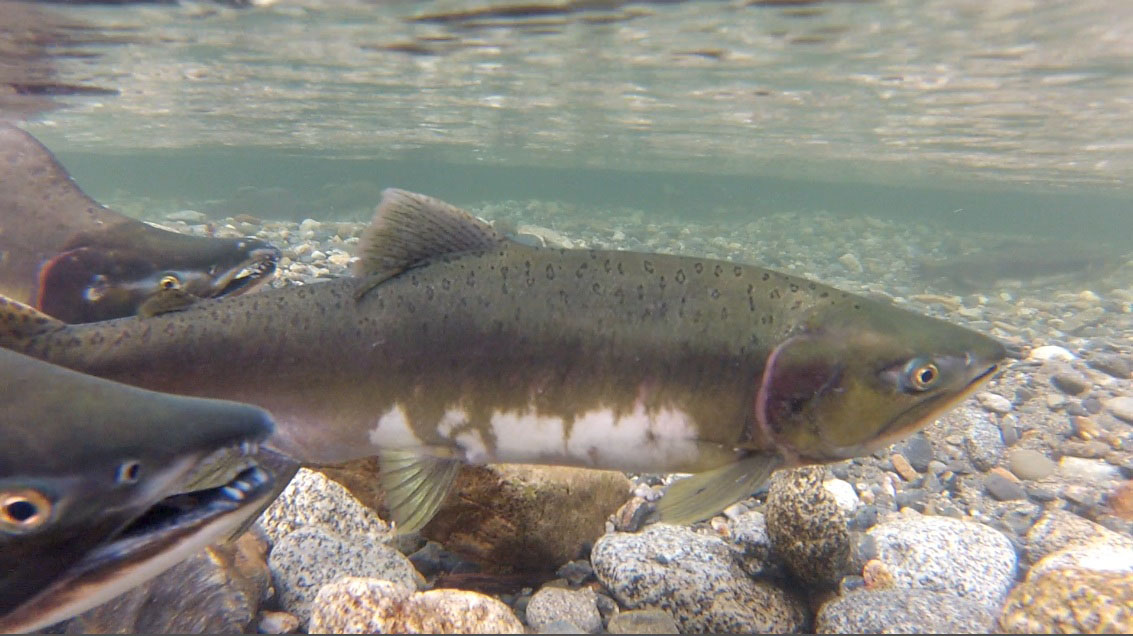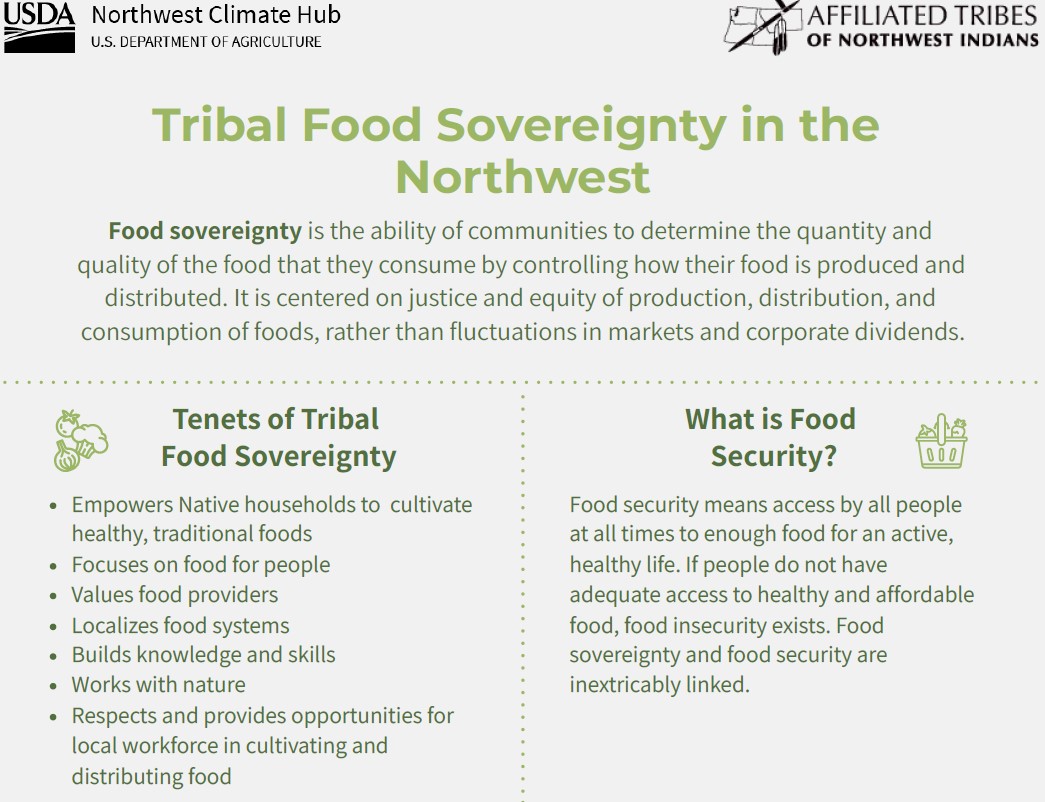This webpage was made in partnership with the Affiliated Tribes of Northwest Indians.
Estimated reading time: 3 minutes

Food sovereignty is the ability of communities to determine the quantity and quality of the food that they consume by controlling how their food is produced and distributed. It is centered on justice and equity of production, distribution, and consumption of foods, rather than fluctuations in markets and corporate dividends.
Tenets of Tribal Food Sovereignty
- Empowers Native households and communities to address issues of hunger and health by cultivating their own healthy, fresh foods
- Re-introduces traditional processes of food production and distribution
- Focuses on food for people
- Values food providers
- Localizes food systems
- Builds knowledge and skills
- Works with nature
- Respects and provides opportunities for local workforce in cultivating and distributing food
What is Food Security?
Food security means access by all people at all times to enough food for an active, healthy life. If people do not have adequate access to healthy and affordable food, food insecurity exists. Food sovereignty and food security are inextricably linked.
Why is Food Sovereignty Important to Tribes?
Native Americans and Alaska Natives are more likely to experience food insecurity than many other racial and ethnic groups in the U.S. This is due to a number of factors, including displacement from their traditional homelands, destruction of their traditional economies and food systems, and the imposition of Euro-American land management and property practices. Many Indigenous People in the U.S. live without adequate access to healthy and nutritious foods, or where access is limited to highly processed and refined foods. This removal from traditional foodways has caused severe health problems, including diabetes, heart disease, anxiety, and depression.
Tribal food sovereignty advocates for Indigenous rights to traditional practices, development of local food economies, the right to food, seed sovereignty, and access to lands with culturally important foods. Many Native communities are returning to healthy, traditional foods and practices to combat food insecurity and reestablish Tribal food sovereignty. For example, the Muckleshoot Tribe has bought back over 93,000 acres of ancestral land. On their land, the Tribe hosts harvest and berry festivals, cultural-sovereignty classes, salmon-filleting demonstrations, sheep and elk processing demonstrations, and workshops that teach traditional food preparations. Many other Northwest Tribal communities are investing in similar food sovereignty projects.
How Does Climate Change Affect Tribal Food Sovereignty?
In the Northwest, climate change is already affecting Tribal food sovereignty. Rising temperatures, changing precipitation patterns, and an increase in extreme events threaten traditional food systems and make it more difficult for Tribes to produce, harvest, and access traditional food sources. Rising temperatures can also make it more challenging to store foods in traditional ways. For example, in Alaska, permafrost cellars relied upon to store frozen food supplies are beginning to thaw.
While climate change is impacting food security throughout the U.S., food insecurity has disproportionately impacted Indigenous communities. In the Northwest, climate change continues to alter Indigenous access to several important species, such as salmon, berries, and shellfish.

What Can Be Done to Support Tribal Food Sovereignty?
- Build partnerships with Tribes centered on trust and Tribal sovereignty
- Ask your Tribal partners what they need to ensure food sovereignty
- Increase Tribal access to land with traditional foods
- Support Indigenous agency in their own food production
- Ensure management strategies are not adversely impacting Indigenous foods
- Support climate-smart adaptation practices that protect and promote Indigenous ways of life and food sources
- Support Indigenous agriculture
- Provide Indigenous workforce opportunities in the cultivation and distribution of food
The Muckleshoot Food Sovereignty Project – The Muckeshoot Tribe has bought back over 93,000 acres of land to continue traditional food gathering, harvesting, and planting practices.
Columbia River Intertribal Fish Commission – The Columbia Plateau Tribes are working to put fish back in the rivers and protect watersheds. The Commission provides the tribes and the region with invaluable biological research, fisheries management, hydrology, and other science to support the protection and restoration of Columbia River Basin salmon, lamprey, and sturgeon.
The Swinomish Tribe is monitoring salmon, restoring oyster beds, and creating clam gardens to combat climate change and food insecurity.
Northwest Indian College Tribal Community Food Sovereignty Programs include projects on Puget Sound, the Lummi Nation, and in partnership with the Muckleshoot Tribe.
GRuB Wild Foods and Medicines Program connects people with plants, local landscapes and cultural traditions by convening experts to create innovative educational resources, hosting trainings, internships, and classes, providing technical assistance to schools and organizations, and stewarding models of ecosystem gardens.
Tyonek Grown is improving food security through community agriculture and salmon habitat restoration on the Kenai Peninsula in Alaska.
Sustainable Southeast Partnership works to grow resilient food systems that decrease dependence on outside sources, eliminate waste, promote knowledge and skill-sharing networks, support tribal food sovereignty, cultivate place-based food enterprises, and improve household and community health.
Affiliated Tribes of Northwest Indians
USDA Indigenous Food Sovereignty Initiative
Tribal Climate Adaptation Plans from the University of Oregon
-
Tribal Food Sovereignty in the Northwest Factsheet





